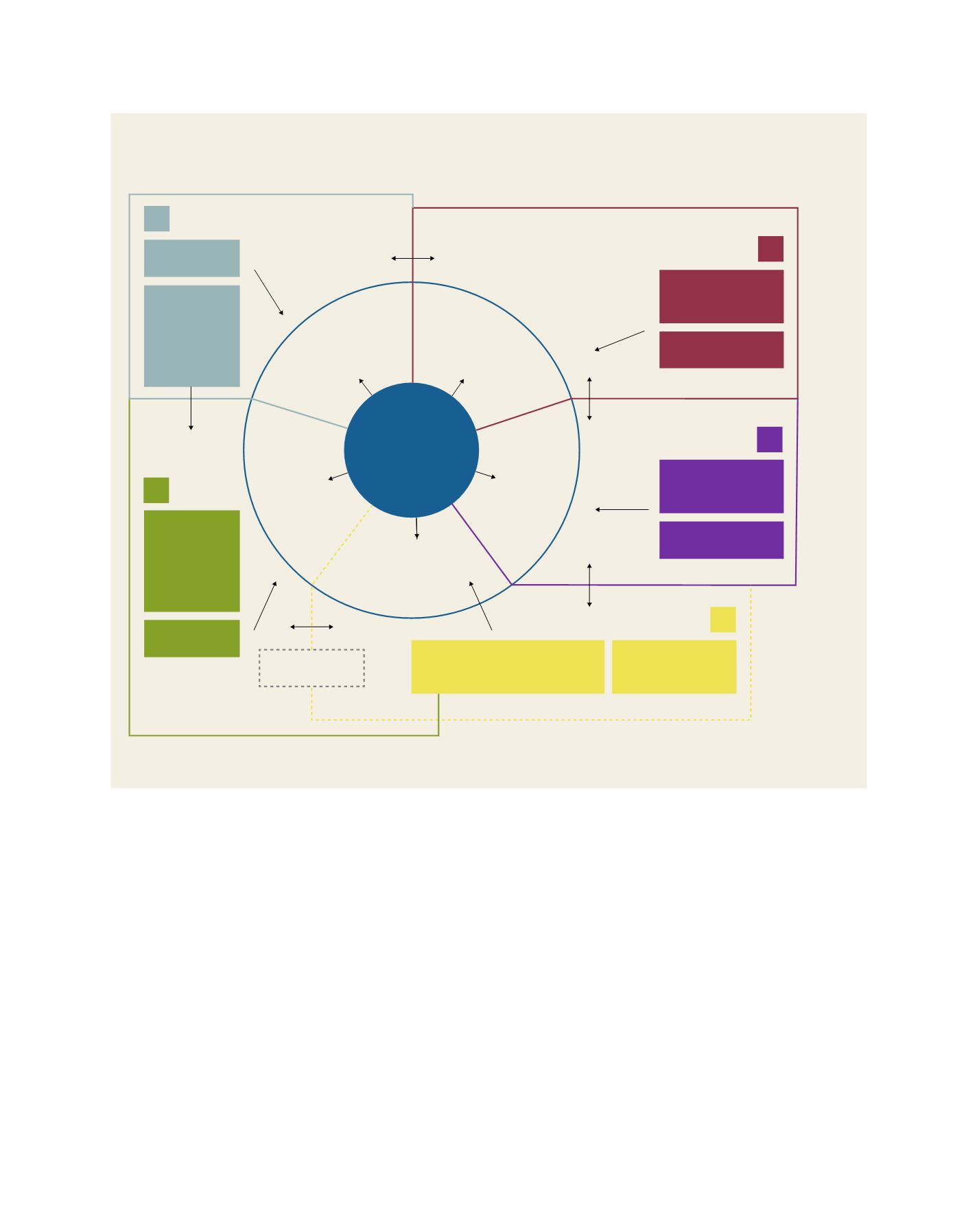

[
] 19
The family-centric approach developed by SERFAC is based on the family lifecycle and
Erik Erikson’s epigenetic model: stages of development
Source: SERFAC
strengths-based, overarching practice which builds on resources
within the family itself. It employs an empowerment paradigm,
develops collaborative partnership and dialogue within families,
and provides understanding of the stages of development needs of
individual members of the family and, most importantly, the role
of women. It engages in a strategically unified and multidimen-
sional approach covering the whole gamut of relationships, taking
into account that when adequate support – physical, emotional
and financial – is available for the goal of changing their lives,
women are capable of doing it. Such an understanding reduces
the asymmetry between rights and responsibilities of women and
men in the family. This is now better understood, leading women
not to deny the family, but to challenge its structure.
Some experimental projects were conducted over several
years to understand the nature of issues such as gender
inequality, poverty, marriage instability, broken families and
single parenting, in order to identify possible entry points for
reducing violence in families. Several major findings were
noted, chiefly, the lack of stability in marriage and family
leading to breakdown of family and other social safety nets
and relationships. It was gradually understood that causes and
consequences are intertwined and any solution has to address
the developmental process, matrix of relationships within
the family and social pressures on the family simultaneously
while giving priority to the source of the problem.
Drawing from these experiences, two major multi-pronged
approaches were developed:
• fertility regulation, clarifying the role of parenthood,
gender balance, and fostering dialogue among members
as equals
• prioritizing socioeconomic needs of the family, its
security and socializing of its members.
The following questions then arose: Where does gender equal-
ity start, and how does it manifest itself? How do policymakers
and women themselves understand gender equality? Is struc-
SERFAC
2
3
4
1
Service to
hurting families
Service to
parents
Service to
developing
families
Service to
pre-married
and singles
Service to
married
couples
Birth to adolescence
(coming to identity)
Stages 1 to 4
Parenting
Adulthood
Early adulthood
Human sexuality
Skills training,
pre-marriage preparation
Stages 6 to 8
Marriage stability
Employment and
NfP(BOM) and
family health
Adolescence
Stage 5
5
Counselling
Counselling and
therapy for all
age groups as
intervention
G
ender
E
quality
and
W
omen
’
s
E
mpowerment
















